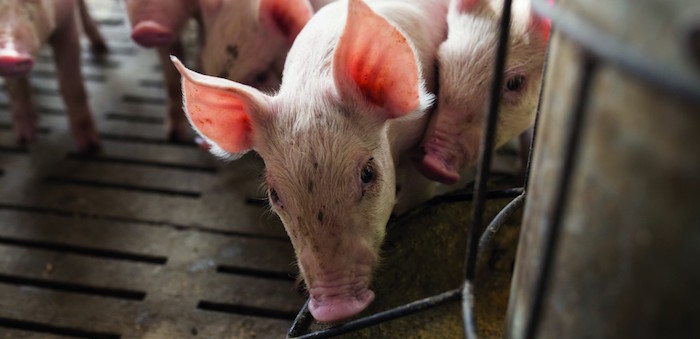The European Commission has dropped plans for a drastic reduction in permitted copper levels in piglet feed in what is a significant win for the NPA.
The Standing Committee on Plants, Animals, Food and Feed, which helps the Commission in its role of implementing EU legislation, agreed revised maximum permitted limits (MPLs) of copper compounds for piglet feed at its latest meeting.
After more than a year of debate on the new limits, the Committee finally agreed that the MPLs should be reduced from the existing level of 170mg/kg to 150mg/kg up to four weeks after weaning, 100mg/kg to eight weeks after weaning and then to 25mg/kg.
This comes as a huge relief for the pig sector, given that the initial proposal was to reduce the level to 25mg/kg for all ages of pigs, largely in order to protect soils from elevated concentrations of heavy metals.
Expert witness
NPA Allied Industry Group member Paul Toplis was asked by EU animal feed representative body FEFAC to act as an expert witness to appeal against the original proposal because he had been instrumental in two previous successful defences of copper.
Mr Toplis warned of the dangers to piglet health of reducing MPLs to 25mg/kg. “Alongside allies from the EU pig and animal feed sectors, we argued that such a dramatic reduction in copper limits, coming at the same time as the industry faces the loss of zinc oxide and pressure to reduce antibiotic use, would have made it very difficult to control post-weaning diarrhoea in piglets,” he said.
“We focused on AMR as the priority, fighting for copper retention to enable producers to continue their impressive reductions in antibiotic use.”
Mr Toplis estimated that the potential cost to producers of the original proposals being implemented was £1-2/pig as a result of reduced performance and piglet health, meaning the decision has potentially saved the industry up to £18 million.
NPA senior policy adviser Georgina Crayford said: “This is a significant win for the pig industry and clearly demonstrates how the NPA’s strength and expertise within its ranks can be quickly and effectively deployed to defend pig producers here in the UK. We are really pleased that the Committee has seen the sense in our arguments and reached a sensible conclusion.”
How the case was made
The NPA cited numerous studies that have shown that supplementing diets with copper at pharmacological levels (150–250 mg/kg) is beneficial to piglet health.
For example, a recent study by Bikker et al demonstrated a loss in performance of 2-3% in weaned pigs during the nursery period when Cu supplementation was reduced from 160 to 120 mg/kg. It also resulted in an increased number of pigs with loose faeces and diarrhea, reinforcing evidence that copper at pharmacological levels supports the gut health of pigs.
That is why commercial diets for weaned pigs up to 12 weeks of age generally contain a Cu supplement close to 170 mg/kg in EU countries.
The NPA also highlighted evidence suggesting that the ban was unnecessary from an environmental perspective. While the Centre for Ecology and Hydrology’s latest Countryside Survey identified a statistically significant increase in Cu concentrations in UK soils between 1998 and 2007, no changes were detected in arable land which represents the land type where most animal manure is applied.
“This suggests that extraction of copper from the soil by cropping helps to prevent increases in concentrations of this metal from application of animal manure,” Dr Crayford said.




